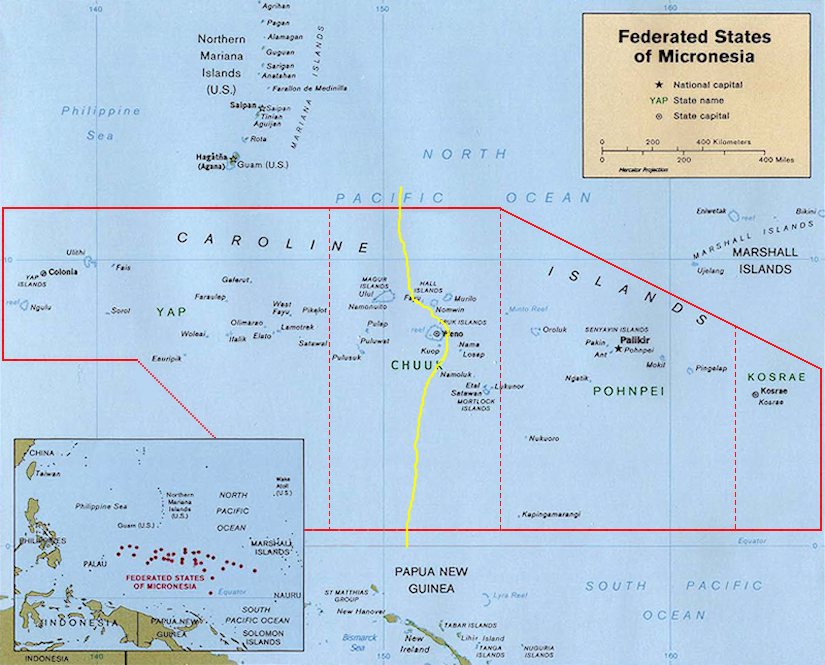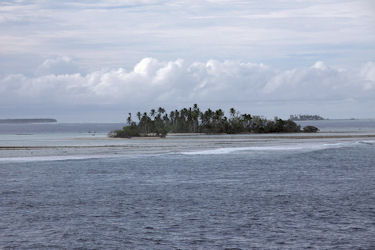Federated States of Micronesia

Historie
The ancestors of the Micronesians settled over four thousand years ago. A decentralized chieftain-based system eventually
evolved into a more centralized economic and religious culture centered on Yap Island.
Nan Madol, a UNESCO World Heritage site, consisting of a series of small artificial islands linked by a network of canals,
is often called the "Venice of the Pacific". It is located on the eastern periphery of the island of Pohnpei
and used to be the ceremonial and political seat of the Saudeleur dynasty that united Pohnpei's estimated 25.000 people
from about AD 500 until 1500, when the centralized system collapsed.
From the Moluccas, carried eastward by a storm, the Portuguese navigators Diogo da Rocha
and Gomes de Sequeira reached some islands of the Archipelago in 1525.
It took about five stopovers by five different European ships before the name "Islas de Carolina" was used
to refer to the stretch of islands located south of Guam. The name gained currency when in 1686, a Spaniard by
the name of Francisco Lazcano named them after King Charles II of Spain or Carlos II,
who funded the expedition.
Some few Western travelers subsequently visited the islands. An early visit of Spanish missionaries (1732) resulted
in one of several murderous attacks on the newcomers. By 1875 Spain asserted her rights on the archipelago, claimed
as early as the 17th century. The Caroline Islands were subsequently placed under the Spanish East Indies,
administered from the Philippines.
Germany, which had occupied Yap, disputed the Spanish claim, and the matter went to the arbitration of
Pope Leo XIII in 1885. He decided in favor of Spain based on earlier claim and discovery, and offered
Germany some trading rights. The Spanish did not settle the islands until 1886, when they founded
Santiago de la Ascension also known then as La Colonia (meaning "the colony"), known today
as Kolonia on the island of Pohnpei.
Then in 1899 in the German-Spanish Treaty as a consequence of the Spanish-American War of 1898,
Spain sold the islands to Germany, which administered them as Karolinen, administratively associated with
German New Guinea.
Japan occupied the islands in 1914 and received a League of Nations mandate over them and the Marshall Islands in
1920. After World War II, the islands (together with the Marshall Islands) became trust territories of the United
States, with the Federated States of Micronesia gaining independence in 1986, followed by Palau in
1994.
The Federated States of Micronesia consisting of four states – from west to east, Yap,
Chuuk, Pohnpei and Kosrae – that are spread across the Western Pacific Ocean.
Together, the states comprise around 607 islands that cover a longitudinal distance of almost 2.700 km
just north of the equator.
I have visited Federated States of Micronesia in
april 2015.
It was part of the West Pacific Odessey
On that trip i have seen
Chuuk Lagoon
Please let me know when you're having questions.
i would be pleased to help you.
Things to do and other tips
